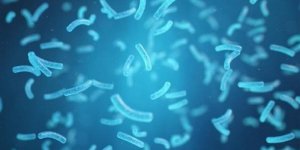| News / Science News |
Methane-eating microorganisms help regulate emissions from wetlands
NSF | JULY 5, 2015
Though they occupy a small fraction of Earth's surface, freshwater wetlands are the largest natural source of methane emitted into the atmosphere. New research identifies an unexpected process that acts as a key gatekeeper in regulating methane emissions from these freshwater environments.

Scientists collect sediment samples in Maine's Acadia National Park. ![]()
The researchers report that high rates of anaerobic (no oxygen) methane oxidation in freshwater wetlands substantially reduce atmospheric emissions of methane. Some microorganisms actually eat methane. Without this process, methane emissions from freshwater wetlands could be 30 to 50 percent greater.
The anaerobic oxidation of methane was coupled to some extent with sulfate reduction. Rising sea levels, for example, would result in increased sulfate, which could fuel greater rates of anaerobic oxidation. Similarly, with saltwater intrusion into coastal freshwater wetlands, increasing sulfate inhibits microbial methane formation, or methanogenesis.
So while freshwater wetlands are known to be significant methane sources, their low sulfate concentrations previously led most researchers to conclude that anaerobic oxidation of methane was not important in these regions.
The new findings show that if not for the anaerobic methane oxidation process, freshwater environments would account for an even greater portion of the global methane budget.
YOU MAY ALSO LIKE




